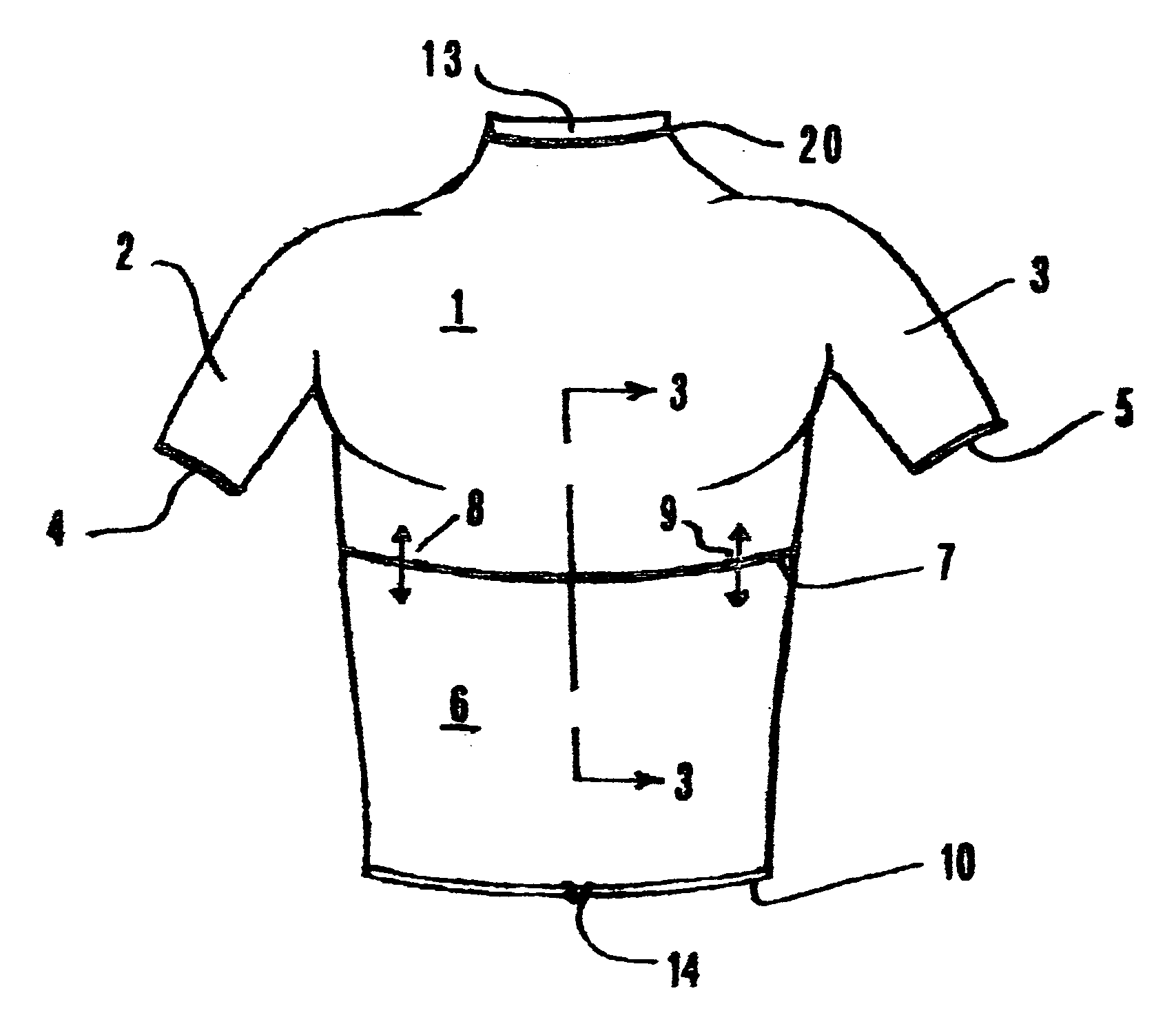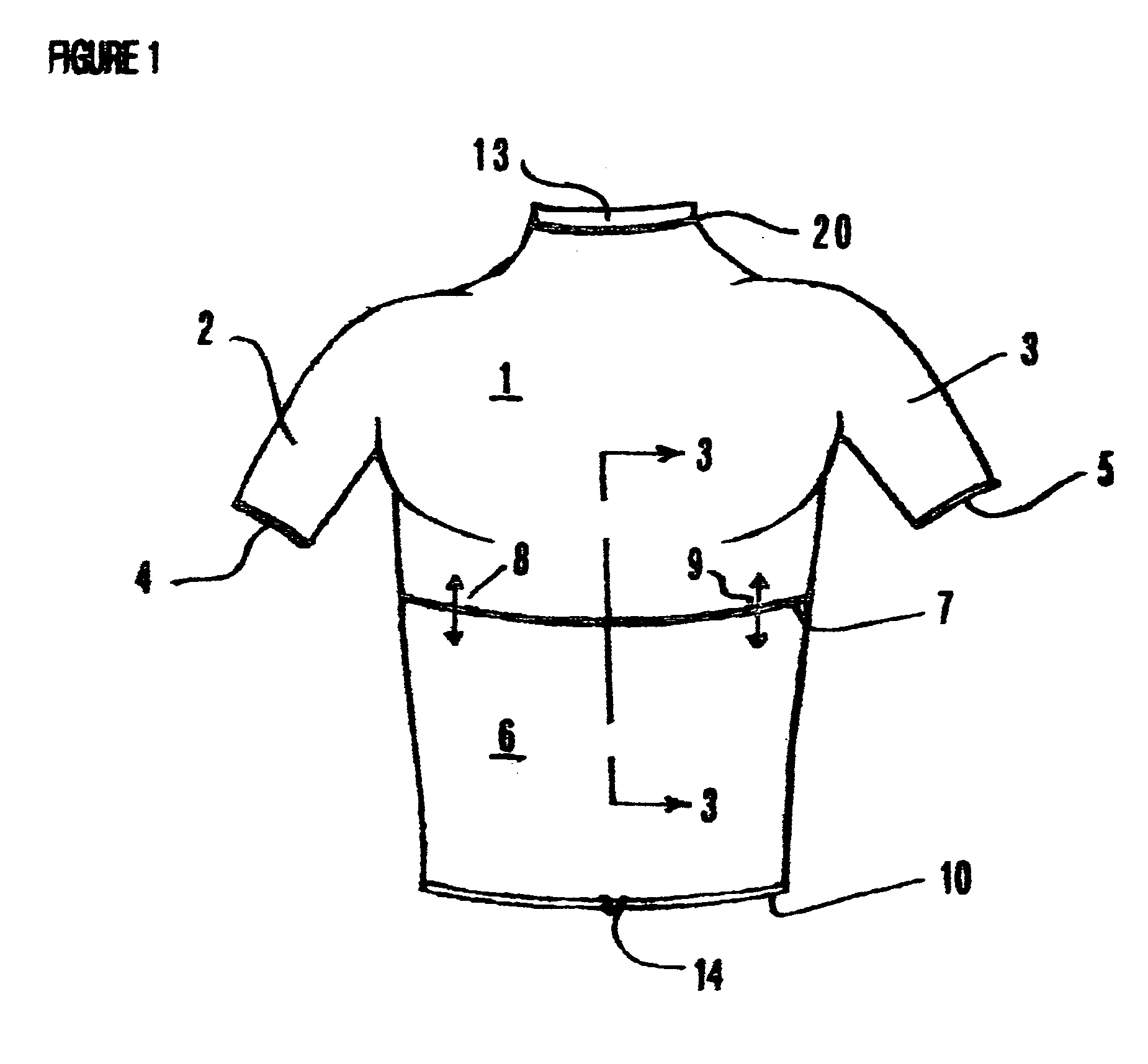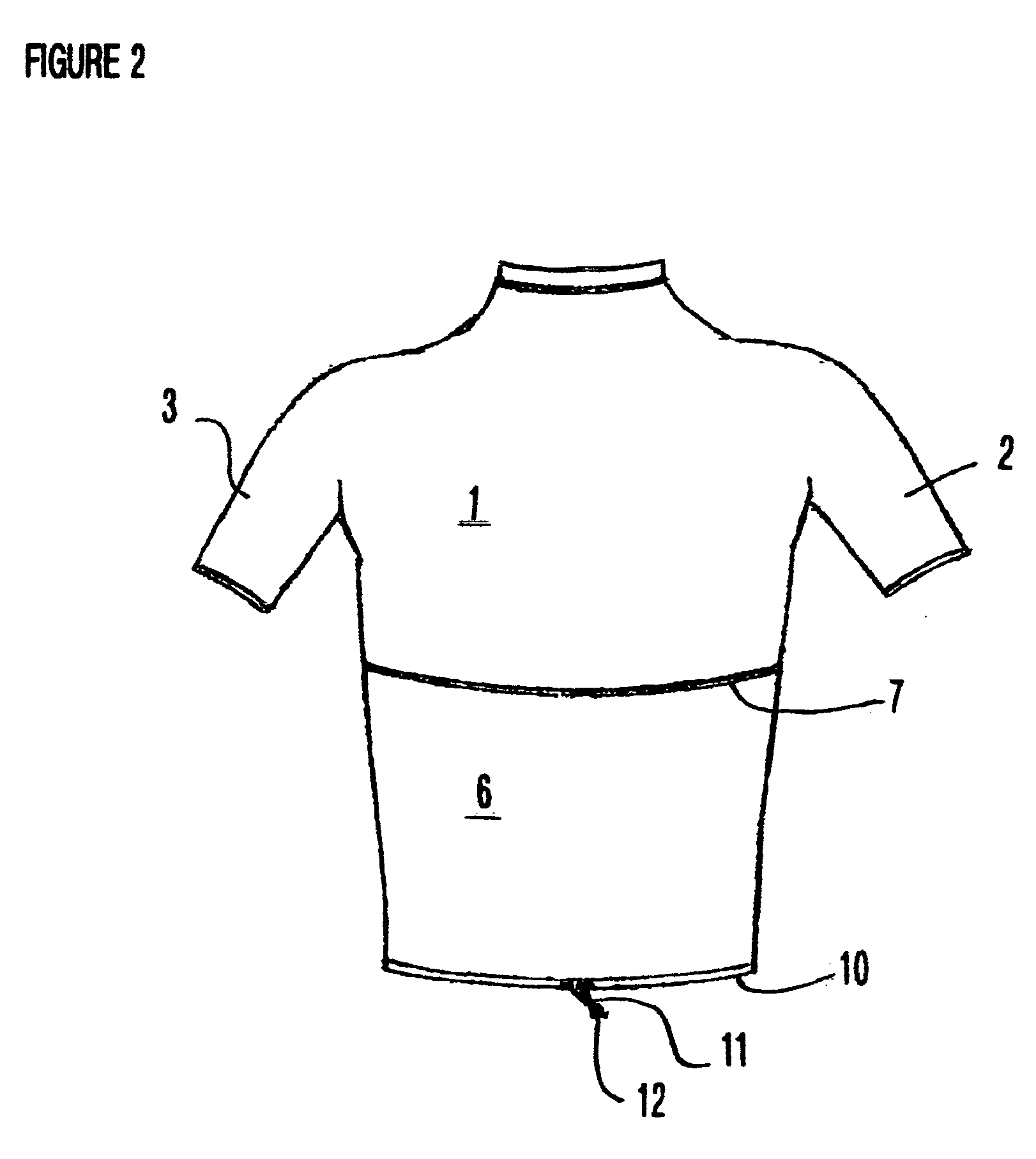Padded surfing shirt
a surfing shirt and padding technology, applied in the field of water sports, can solve the problems of surfing being inherently dangerous, surfing is not always availed of safety devices and practices, and surfers tend to shy away from their use, and achieve the effect of maximum mobility
- Summary
- Abstract
- Description
- Claims
- Application Information
AI Technical Summary
Benefits of technology
Problems solved by technology
Method used
Image
Examples
Embodiment Construction
[0025]A preferred embodiment of a surfing shirt in accordance with the present invention will now be described with reference to the figures. FIG. 1 is a front view of the surfing shirt and includes an upper body portion 1 which extends around the front and back of the upper portion of the wearer's body as further shown in the rear view depicted in FIG. 2.
[0026]Upper portion 1 includes an integrally formed neck 13 and sleeves 2 and 3. While shown as short sleeves to cover a portion of the wearer's arms, sleeves 2 and 3 may be formed as long sleeves to cover the entire length of the arms as is generally known in the art with respect to shirts. Rather than being integrally formed with upper portion 1, neck 13 and sleeves 2 and 3 may also be formed as separate pieces and sewn or otherwise affixed to upper portion 1 as one of ordinary skill in the art would know how to accomplish.
[0027]Also included on neck 13 and sleeves 2 and 3 are decorative hems 20, 4 and 5, respectively. While opti...
PUM
| Property | Measurement | Unit |
|---|---|---|
| thickness | aaaaa | aaaaa |
| thickness | aaaaa | aaaaa |
| thickness | aaaaa | aaaaa |
Abstract
Description
Claims
Application Information
 Login to View More
Login to View More - R&D
- Intellectual Property
- Life Sciences
- Materials
- Tech Scout
- Unparalleled Data Quality
- Higher Quality Content
- 60% Fewer Hallucinations
Browse by: Latest US Patents, China's latest patents, Technical Efficacy Thesaurus, Application Domain, Technology Topic, Popular Technical Reports.
© 2025 PatSnap. All rights reserved.Legal|Privacy policy|Modern Slavery Act Transparency Statement|Sitemap|About US| Contact US: help@patsnap.com



